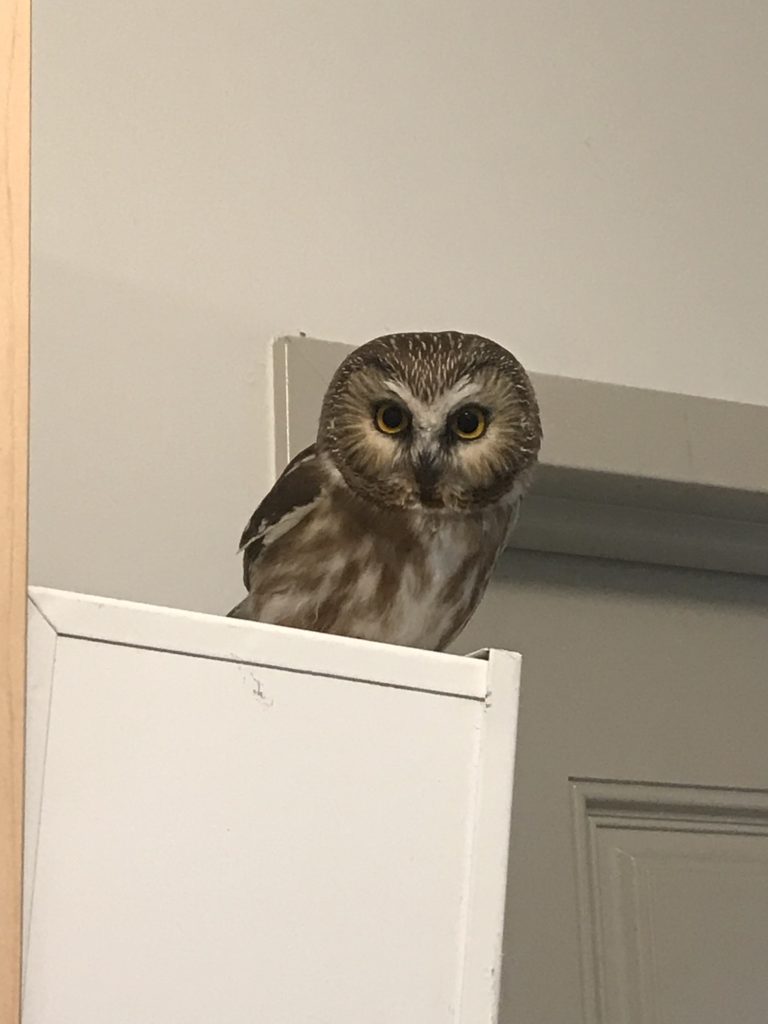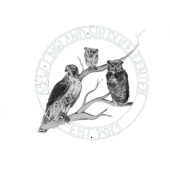
Cape Cod is home to many owl species. Some, like the Great Horned Owl, are very large and powerful. They can exert five hundred pounds per square inch of pressure with just their talons alone. Others, such as the Northern Saw-whet and Eastern Screech Owl, might appear less intimidating because they are small enough to fit in the palm of your hand, however they are just as formidable. Owls are the feathered ninjas of the bird of prey world. Like all raptors they not only need to be able to maneuver swiftly to catch their prey, but because they hunt at night, they also need to be able to fly completely silently. Even though you can’t hear them flying around you can identify some by their call or hoot. Barred Owls have a distinct call that sounds like a concerned parent asking “Whoo cooks for youuu?”
This time of year we settle in for the winter, but owls are on the move. All of these species tough out the cold weather and remain here throughout the season. Snowy Owls migrate down from the north and can often be found on several beaches on the Cape. The dune landscape mimics the topography of their home, the artic tundra. Owls have a higher nutritional demand in the winter, which helps them store fat to keep warm. The solstice marks the beginning of the breeding season for several species of owls, and the extra hours of darkness allow more time for hunting and nest building. However, this also means that they are more active at earlier in the evening when traffic is still heavy. Birds of prey commonly hunt near busy roads because the surrounding brush and constant supply of littered goods makes it an oasis for many prey species. This unfortunately increases the chances of them being hit by a car.
At The Birdsey Cape Wildlife Center, we can always expect to see an increase in the number of owl patients admitted during the winter months. In December, we have provided care to 8 owls, consisting of four different species. The majority of these patients were unfortunately hit by cars. Sometimes these incidents result in minor head trauma which can resolve with supportive care, however most require more intensive veterinary treatment. We recently released an Eastern Screech Owl (pictured below) that got struck by a car and stuck in the grill. The impact broke one of the bones in his wing which we were able to successfully surgically pin using spinal needles. Some of our other owl patients include a Great Horned Owl that was entangled in fishing line, and a malnourish juvenile Barn Owl. We strive to provide the best veterinary care to be able to return as many of these patients back to the wild.
This winter you can help our feathered friends by being cautious while driving at night, not throwing those apple cores out the car window, and even putting up nest boxes to provide extra shelter. You might even be able to see or hear one by going on an owl prowl with family and friends. It is a great way to stave off cabin fever, and is a good excuse to spend some quiet time in the woods, which post-holidays is always a welcome treat. You never know whooo or what you might find.
To learn more about the Birdsey Cape Wildlife Center or help in its mission, visit www.capewildlifecenter.com or call 508 362 0111.

Recent Comments